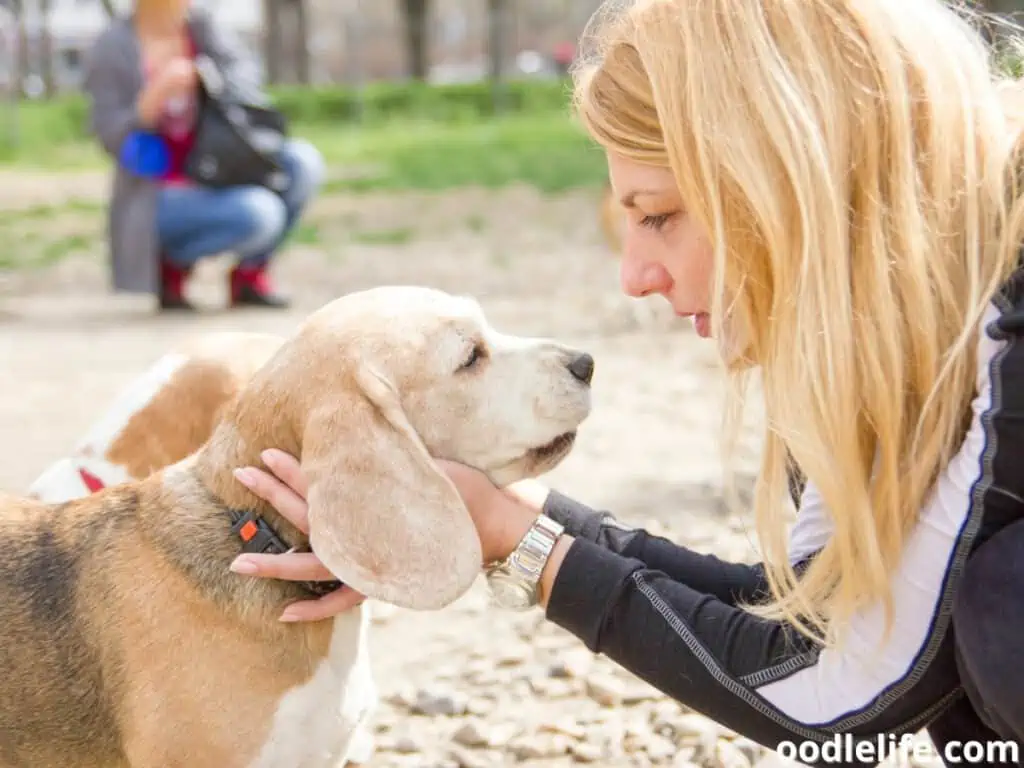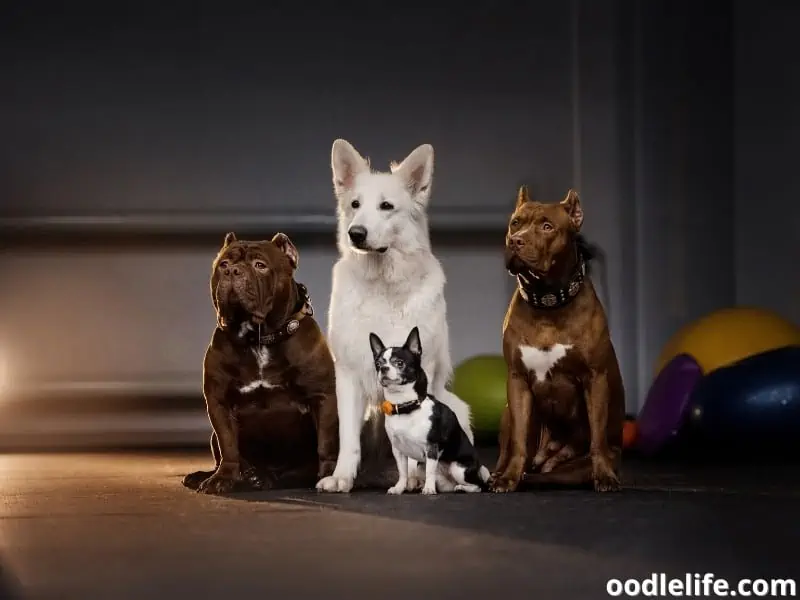Do Dogs Have Accents? [What We Know]
It’s no secret that dogs have unique personalities, but how do their methods of communication differ from pup to pup? Do different dogs have accents based on breed, region, or community?
Understanding this question can give us a little more insight into the inner worlds of our dogs and potentially get us closer to understanding their level of communication. We’re going to take a look at canine communication today, answering the question, “do dogs have accents?”

Hopefully, the ideas below give you a little more appreciation for your furry friend. Let’s get started.
Why Do Dogs Bark in the First Place?
It seems natural to think that dogs bark whether we’re around or not. They can bark, so what would that have to do with humans?
Interestingly, it turns out that dogs don’t have much use for barking at one another. Instead, their intra-species communication happens mostly through small sounds like yips, growls, whimpers, and body language.
They’re able to howl and communicate over long distances to one another, but the standard “barking” that we’re used to is different. Dogs bark mainly to communicate with humans.
Barking is common in domesticated dogs, but wild dogs aren’t known to bark in the same way. Most of the communication that dogs do through barking is to alert, get attention, or express some sort of emotion to humans rather than other dogs.
Dogs that grow up in a domesticated household bark at or to one another occasionally, but that seems to be learned behavior.

Do Dogs Have Accents?
A study by the Canine Behaviour Centre in England showed that dogs have regional accents.

It turns out that dogs bark in a regional accent that aligns with the sound of their owner’s voice. This has very little to do with the other dogs around, other than the fact that they might learn particular sounds or tones from dogs that learned from their owners.
This happens naturally as a result of the fact that dogs associate themselves with humans as packmates. Therefore, the method of communication that the pack leader uses is the one that the dog will pick up on.
Even though our dogs aren’t trying to replicate our actual words, they do their best to match the tone and timbre of our commands. The same study found that dogs were more likely to mirror the louder, more aggressive commands that owners give.
One possible explanation is that those commands draw the most respect and appear the most authoritative. It’s also the case that barking is one of the more authoritative methods of speech that a dog has. In contrast to whimpers or yips, a bark indicates that there’s something a dog’s owner needs to be aware of.

How Many Dog Accents Are There?
The evidence from the study shows that dogs develop nuanced accents.
The difference in canine speech is distinguishable when they live short distances apart. For example, dogs living in Boston and New York might have different accents.
A closer look at these differences could show us a finer gradient of dog accents, but we need more research. The point is that dogs try their best to sound and behave like their owners.
That might give you a sense of pride the next time your pup barks and looks your way!
Your pup is mimicking your style of speech and your accent. The same is true for dogs all around the world. If your dog were born in the wild, it would have its own accent according to the pack it belonged to.

Bilingual Dogs
An extension of this idea is the fact that dogs can distinguish between people who speak different languages. It’s not as sophisticated as it might sound, but it’s pretty remarkable.
Studies have shown that the language centers of a dog’s brain light up differently when they hear people speak languages that they’re unfamiliar with. Of course, dogs can learn many words during their lives, but their key association with familiar languages is likely the way they sound and how they come off from their owners.
Instead of being bilingual, they might be more confused when someone uses a speech pattern that they’re unfamiliar with. In terms of understanding different languages, that might be up to the dog in question.
For example, could a dog hear “sit” in English followed by the same command in Portuguese and follow directions in both cases? There’s a good chance that most dogs could, but that association might be with the particular words used. The dog might not recognize that different styles of speaking are happening.

Tone and Understanding in Canines
The fact that dogs use different dialects and understand some nuances of language suggests they’re a little savvier than we give them credit for being.
A University of Vienna study suggests that dogs are aware when we’re lying to them! The study used unknown humans and treats in various dog bowls to see how dogs would respond when they were lied to about the treats.
They found that dogs tended to ignore human commands when they knew that the treat wasn’t where they were told to look. Similar studies in monkeys and small children have yielded similar results. Dogs were more trusting of people they knew and more suspicious of people they didn’t know.
The first command from the unfamiliar party was typically followed, but dogs didn’t fall for the lies from strangers when they were aware of the location of the treat.
Dogs also make distinctions in the tones of our voices and the emotional content of what humans are saying. That is something that pet owners all know intuitively, but science backs it up.
Pups respond when faced with varying levels of emotional content and tone of voice. This evidence suggests that dogs see the nuances of what we try to communicate with them. They might not have a clear understanding of the particular issue at hand, but they have a sense of the appropriate response and the nature of the situation.
You can take that as a reassurance that your dog is there to help in times of need. It’s easy to wonder if you’re just making up all of that emotional support, but a wealth of science confirms your best friend’s abilities.

Need More Insights into Dog Ownership?
So, do dogs have accents? They sure do, and they get them from you. The wild world of dogs gets a lot more interesting, too.
We’re here to help you out with all of the information you need. Explore our site for ideas on grooming, feeding, training, and taking great care of your pet.